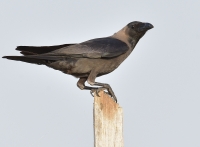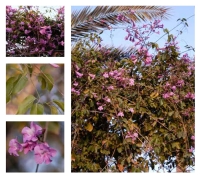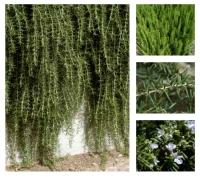
The House Crow (Corvus splendens) is a black-colored bird with gray covering its neck, head, and upper abdomen. It is smaller in size than the brown-necked raven and is considered an invasive bird in the Eastern Province of the Kingdom of Saudi Arabia, as it was not recorded there until the 1980s. Distribution of the house crow In Saudi Arabia, the house crow (Corvus splendens) is found exclusively in coastal cities of the Eastern Province, including Ras Tanura , Al-Khobar , Al-Jubail, Dammam ,...

The Glowvine Plant (Saritaea magnifica, Bignoniaceae) is a climbing shrub classified as one of the climber plants suitable for cultivation in Riyadh , the capital of the Kingdom of Saudi Arabia. It belongs to the Bignoniaceae family and is native to Colombia, Ecuador, and tropical regions. It thrives in high to moderately low humidity levels and requires low maintenance. The plant propagates through seed planting and seedling transplantation. It is sensitive to urban, dry, and waterlogged envir...

The Rosemary Plant (Rosmarinus officinalis, Lamiaceae) is a dwarf shrub belonging to the Lamiaceae family. It thrives in temperate regions and is native to southeastern Europe and the Middle East, typically growing near coastal areas. Its height ranges between 0.5 and 1.5 m. The plant adapts to various environmental conditions in several regions of the Kingdom of Saudi Arabia, including Tabuk and Riyadh Provinces. The first recorded use of this plant in Riyadh was in the Diplomatic Quarter in...